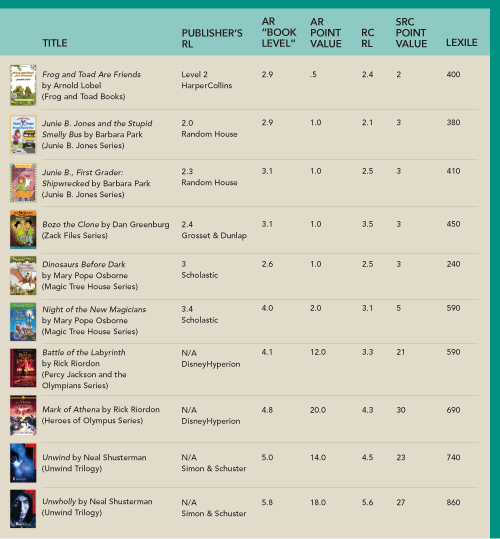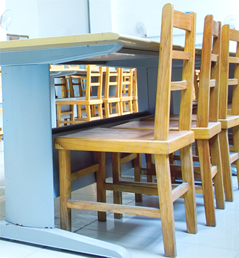
By now, we’ve gotten used to the idea that many children’s books identify a Reading Level (RL) somewhere on the jacket or back cover. This number is handy for parents and children’s librarians trying to find books of an appropriate comprehension level for young readers.
But where did the number come from? It was generated by a mathematical readability formula.
Invented in the 1920s after science teachers expressed a desire for more simplified texts for their students, readability formulas were created to count the number of syllables and words, and rate the complexity of sentence structure in a given passage; the higher the number, the more difficult the text.
Technology ensures that readability formulas are here to stay, embedded within the children’s book industry. Some publishers use them to provide adults with a handy age range or RL on the back of the book to make selection easier. Additionally, many schools have adopted a computerized reading program like Reading Counts (RC) or Accelerated Reader (AR), which use readability formulas to identify RLs as well as a number of points to be awarded for passing a comprehension quiz after reading a book.
However, since each publisher and each computerized reading software company subscribes to a different set of readability formulas, finding an appropriate book to read can get a bit confusing. The same title can have several corresponding levels and points attached to it, depending on the formula used.

Readability formulas are not sophisticated enough to measure the complexity of content. This explains why books written by the same author, that are part of the same series, have differing RLs and point values. Nor are RLs intended to coincide with grade level. The Color Purple by Alice Walker, for example, includes some explicit sexual content and may be considered appropriate only for older readers. The book, however, is identified by AR as a “book level” of 4.0, by Reading Counts as a “grade level” of 7.2, and has a Lexile Level of 670.
If your head is spinning, imagine what young readers and their parents are going through.
We want readers to feel confident in their ability to select a book to read. So, here’s what you can do to prevent Reading Level anxiety:
- Make sure your library’s catalog and website provide links to any and all of the computerized reading programs to which your local schools subscribe, such as Accelerated Reader (Renaissance Learning), Reading Counts (Scholastic), and Lexile. Links should allow readers to verify that there is a corresponding quiz for what they want to read;
- Train students and parents on how to use these links to look up a book’s corresponding point and quiz value on their own;
- Encourage readers to first find books on the shelf that they are interested in reading and only then to look them up to find out whether a quiz exists or point value is issued;
- Spread the word: Authors don’t write books to a targeted reading level. Authors write stories or fact-filled books that they hope readers will enjoy.
For young readers’ sakes, librarians must de-emphasize the impact of readability formulas. Good literature doesn’t deserve to get buried beneath a bunch of numbers that ultimately have nothing to do with quality or content.
Just as reading is a lifelong skill, so is knowing how to select a book.


